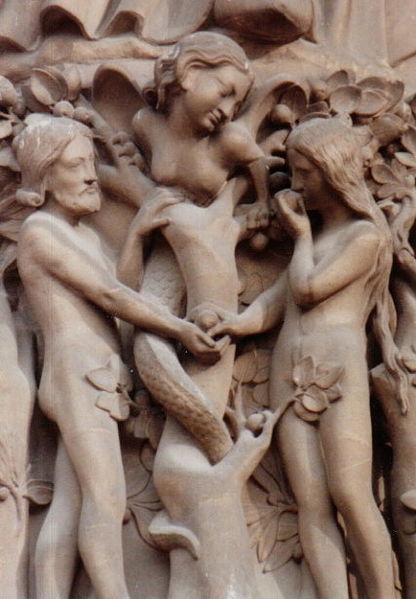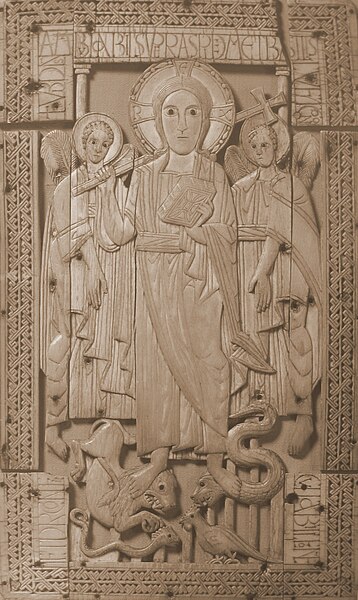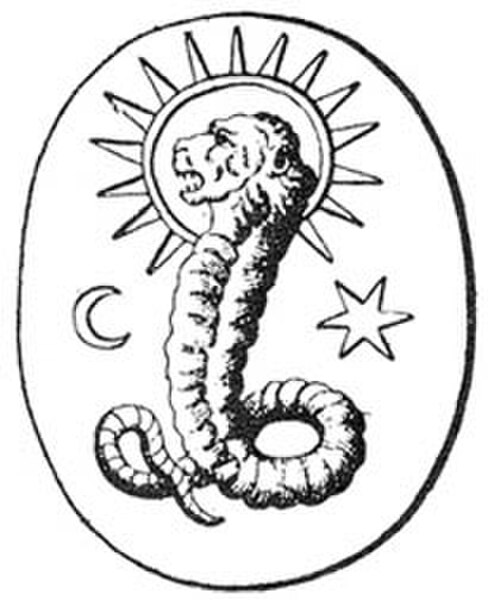Seed of the woman or offspring of the woman is a phrase from the Book of Genesis: as a result of the serpent's temptation of Eve, which resulted in the fall of man, God announces that he will put an enmity between the seed of the serpent and the seed of the woman. In Christianity, this verse is known as the protoevangelium, and is interpreted as a prophecy of the coming of Jesus. In Judaism, the "seed of the woman" is taken as a collective reference to humankind in general.
Immaculata, by Antonio Ciseri
Serpents are referred to in both the Hebrew Bible and the New Testament. The symbol of a serpent or snake played important roles in the religious traditions and cultural life of ancient Greece, Egypt, Mesopotamia, and Canaan. The serpent was a symbol of evil power and chaos from the underworld as well as a symbol of fertility, life, healing, and rebirth.
Adam, Eve, and a female serpent at the entrance to Notre Dame Cathedral in Paris, France. The portrayal of the image of the serpent as a mirror of Eve was common in earlier Christian iconography as a result of the identification of women as the ones responsible for the fall of man and source of the original sin.
Medieval illustration of Eve and the serpent in the Garden of Eden. Folio from the Biblia pauperum, 14th–15th century.
Ivory of Christ treading on the beasts from Genoels-Elderen, with four beasts; the basilisk was sometimes depicted as a bird with a long smooth tail.
A lion-faced, serpentine deity found on a Gnostic gem in Bernard de Montfaucon's L'antiquité expliquée et représentée en figures may be a depiction of the Demiurge.





